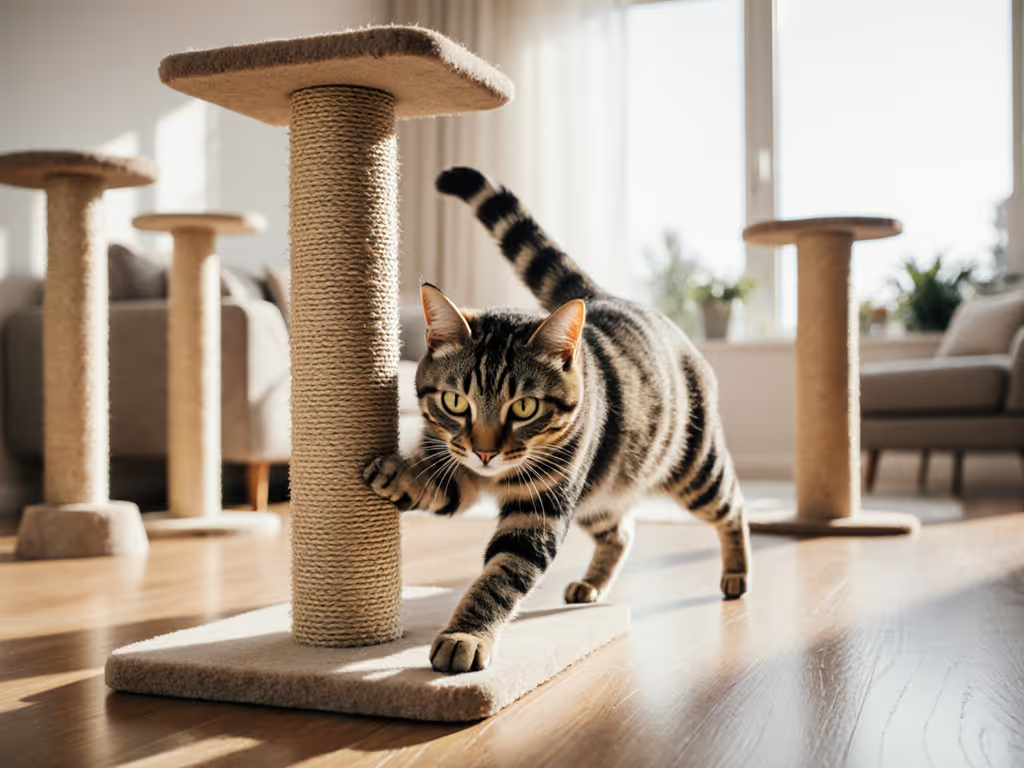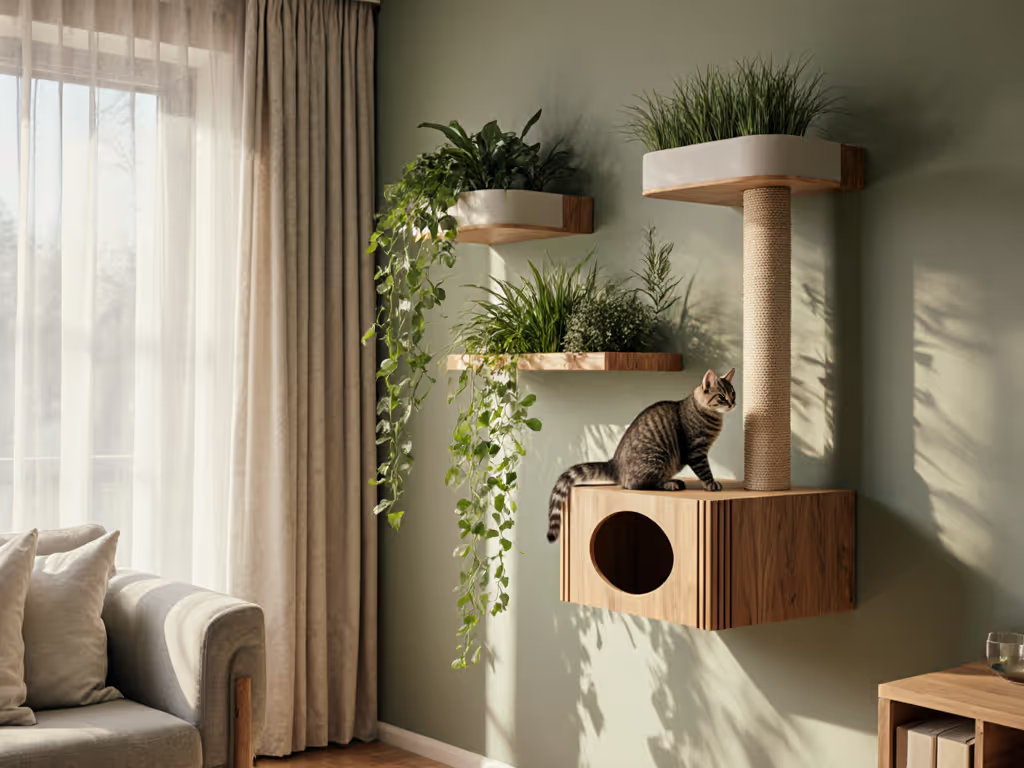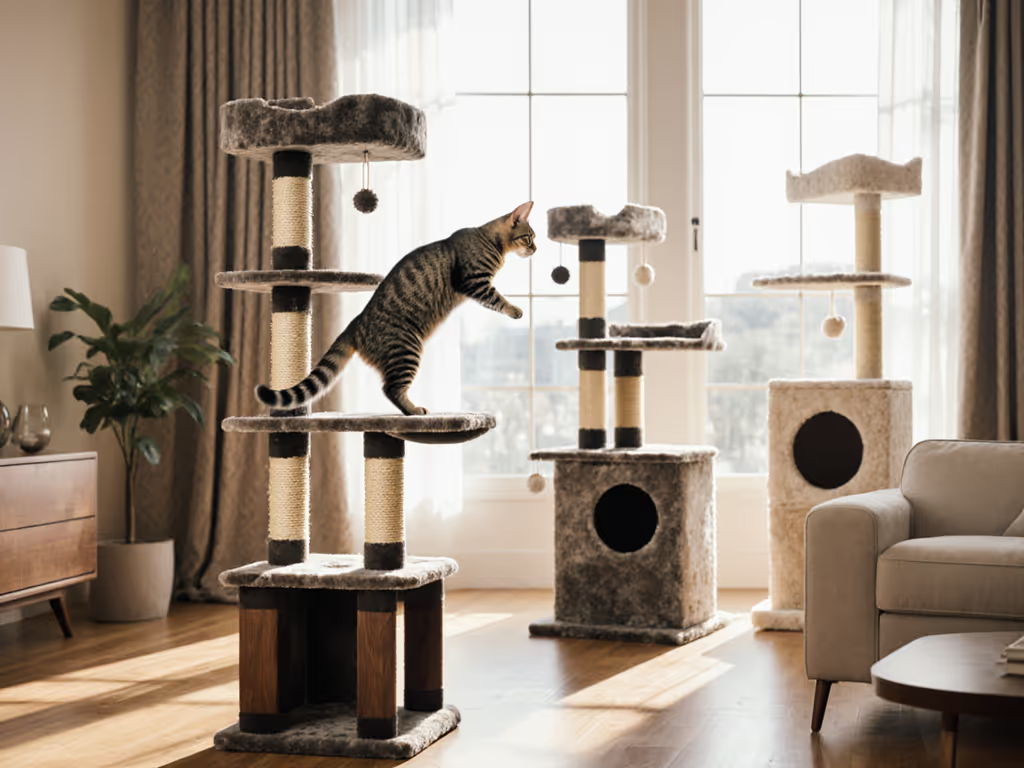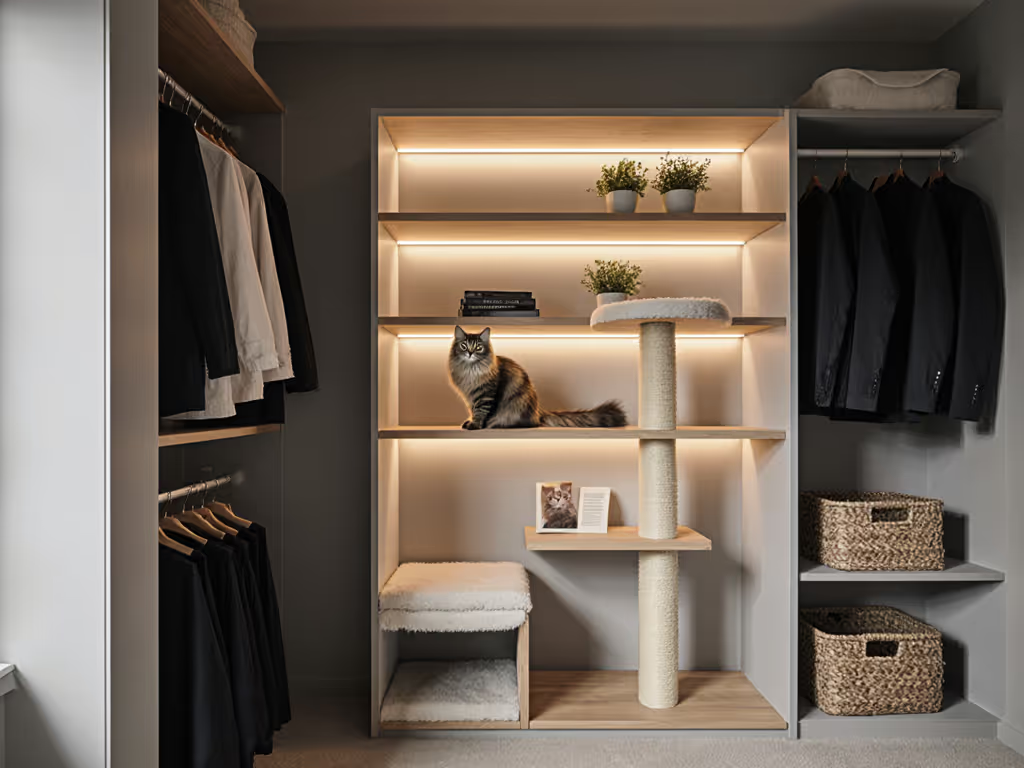
Unique Cat Furniture Tech: Does It Deliver Value?

When considering unique cat furniture, I'm often asked if high-tech solutions actually enhance feline wellbeing or simply clutter our living spaces with expensive gadgets. After 12 years translating feline instincts into room design (from shelter environments to luxury apartments), I've discovered that true innovation in unique cat furniture lies not in flashing lights or app notifications, but in how precisely it serves fundamental cat needs. Behavior blossoms when spaces speak your cat's native language, whether that's through traditional scratching posts or modern automated systems. The question isn't whether technology belongs in cat spaces, but whether it respects the sensory world cats inhabit.
In today's market flooded with "smart" pet products, guardians face a real dilemma: how to distinguish gimmicks from genuinely enriching solutions. With my habit-aware approach to environmental design, I'll help you evaluate whether automated cat furniture delivers actual value for both you and your feline companion.
What Makes Cat Furniture "Unique" Beyond Aesthetics?
True uniqueness in cat furniture stems from how it addresses instinctual needs rather than merely looking different. While many companies market "innovative" designs with LED lights or Bluetooth connectivity, cats respond to environmental features that support their natural behaviors:
- Vertical territory options that provide safe observation points
- Scratching surfaces placed where cats naturally stretch
- Sensory-safe materials that accommodate scent communication
- Predictable pathways allowing confident movement
- Retreat spaces offering privacy without isolation
I once worked with a multi-cat household where a technically "advanced" cat tree with built-in cameras and treat dispensers sat unused while the cats preferred a simple bookshelf arrangement. The owner had spent hundreds on features that ignored feline priorities, Smell is a room too, after all. The cats needed scent-safe zones and unobstructed sightlines far more than video streaming capabilities.
This mirrors Miso's story, a shelter cat who remained confined to his carrier until we created a vertical route using staggered shelves and scent-safe scratching posts. Technology wasn't needed; understanding his sensory-focused needs was. For a whole-home approach to aligning spaces with feline instincts, see our Catify Home design checklist.
Does Automated Cat Furniture Actually Solve Core Feline Problems?
Let's examine whether tech-enhanced solutions deliver meaningful improvements over traditional options. Many automated products focus on owner convenience rather than feline needs, but some strike a valuable balance:
Where Automation Shines: The Litter Box Dilemma
Traditional litter boxes present genuine challenges: odor control, maintenance frequency, and placement constraints. Some automated solutions address these pain points effectively:
- Odor management that respects feline sensitivity: Cats have 200 million scent receptors (versus our 5 million). Solutions that minimize chemical fragrances while containing odors support their wellbeing.
- Predictable cleaning cycles: Cats prefer clean elimination areas. Automated systems that maintain consistency reduce stress.
- Multi-cat household management: Solutions that track individual usage provide valuable health insights.
The PETKIT PuraMax 2 represents a practical application of technology that aligns with feline needs rather than just human convenience. If you're weighing other automatic options, our Litter-Robot 4 comparison breaks down multi-cat performance, reliability, and noise. Unlike gimmicky products, its sensors respond to actual cat behavior patterns rather than arbitrary schedules.
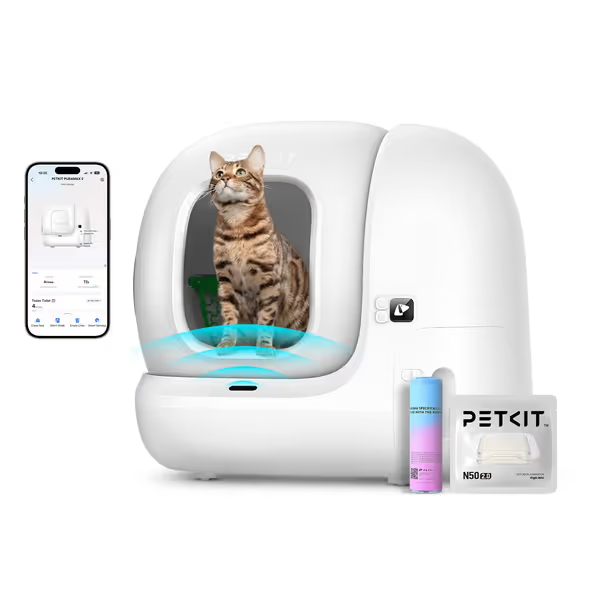
PETKIT PuraMax 2 Self-Cleaning Litter Box
What makes this solution stand out in the smart pet products value discussion is its precise attention to feline priorities: the low-entry design accommodates cats with mobility issues, the 7 infrared sensors prevent accidents, and the dual odor control system avoids overwhelming scents that would drive cats away. Rather than adding unnecessary features, it addresses core litter box challenges while respecting cats' sensory world.
Where Automation Falls Short
Many "smart" products fail because they:
- Disrupt established routines with unpredictable movements or sounds
- Create sensory overload through lights or noises
- Prioritize human data collection over feline comfort
- Require constant maintenance that undermines promised convenience
A recent industry report confirmed that 68% of "smart" pet product returns occurred within 3 months, primarily because cats ignored the features or showed stress behaviors around them. True innovation serves the cat first. Technology should be invisible to them while providing meaningful benefits.
What Makes High-Value Cat Furniture Beyond the Price Tag?
Evaluating the real value of unique cat furniture requires looking beyond the initial cost. Consider these factors:
The Longevity Equation
| Feature | Traditional High-Quality | "Smart" Furniture | Value Winner |
|---|---|---|---|
| Expected Lifespan | 5-10 years | 2-5 years | Traditional |
| Replacement Parts | Widely available | Often proprietary | Traditional |
| Repair Complexity | Simple | Technically complex | Traditional |
| Behavioral Impact | Proven | Variable | Case-by-case |
While premium traditional furniture often wins on longevity, some automated solutions deliver value through unique benefits. The PETKIT system, for example, might justify its cost through reduced litter usage (up to 30% less according to user reports) and health monitoring capabilities that could catch issues early.
The Space Efficiency Test
In urban apartments where square footage matters, unique cat furniture must earn its space. For tight layouts, start with these space-saving vertical solutions tested in studios. Evaluate potential purchases by asking:
- Does this replace multiple items (e.g., litter box + scratching surface)?
- Can it integrate into existing furniture arrangements?
- Does it serve multiple cats simultaneously without conflict?
- Does it address specific behavioral challenges in your home?
Technology adds value only when it solves spatial constraints while respecting feline needs. A space-saving design with unnecessary tech features creates clutter rather than harmony.
The Behavioral Impact Assessment
The ultimate measure of value is whether furniture actually improves your cat's wellbeing. Watch for these indicators:
"True value isn't measured in features or cost, but in observed behavioral changes: does your cat use the space confidently? Does anxiety decrease? Do natural behaviors find appropriate outlets?"
Document your cat's interactions for two weeks after introducing new furniture. Note:
- Time spent using vs avoiding the item
- Stress indicators (excessive grooming, hiding)
- Engagement with intended features
- Changes in inappropriate behaviors
Many guardians report that after introducing appropriately designed spaces, destructive scratching decreased by 60-80% as cats finally had satisfying alternatives.
How to Evaluate Tech Furniture for Your Specific Situation
Rather than chasing the latest "smart" trend, use this gentle evaluation framework:
Step 1: Map Your Cat's Current Behavior
Before purchasing anything, document:
- Where your cat naturally scratches, climbs, and observes
- Their preferred resting spots
- Any problematic behaviors (e.g., inappropriate elimination)
- Multi-cat dynamics if applicable
This baseline helps determine whether a product addresses actual needs rather than perceived ones.
Step 2: Prioritize Core Needs Over Novel Features
Create a hierarchy of requirements:
- Safety and stability (non-negotiable)
- Instinctual need fulfillment (scratching, climbing, hiding)
- Space compatibility with your living arrangement
- Maintenance requirements matching your lifestyle
- Tech features that genuinely enhance the above
If a product's technology doesn't serve the first three priorities, it's likely not worth the investment. For safety baselines and DIY tip-over tests, see our cat furniture stability guide.
Step 3: Test Before Committing
When possible:
- Observe cats interacting with similar products in stores
- Start with rentals or trial periods (many premium brands offer this)
- Introduce new items gradually alongside familiar options
Remember that cats need 7-14 days to accept new environmental features. Follow our stress-free introduction steps to boost acceptance and prevent setbacks. Don't judge effectiveness based on initial avoidance.
Finding Balance in the Tech vs. Traditional Debate
The most successful environments I've designed blend practical traditional elements with thoughtful technology (never the other way around). Your multi-level cat tree might incorporate traditional sisal scratching surfaces while using smart sensors to monitor usage patterns that reveal emerging health issues.
For most households, the ideal solution lies in understanding that unique cat furniture earns its place through feline acceptance and behavioral benefits, not novelty. Whether you choose a simple wall-mounted shelf system or an automated litter solution, prioritize designs that give cats choice, predictable routines, and sensory safety.
When evaluating any product, ask: "Does this help my cat express natural behaviors more fully?" If the answer isn't a clear yes, reconsider whether it truly belongs in your shared space.
Final Thoughts: Value Beyond the Price Tag
Technology in cat furniture delivers value only when it disappears into the background of your cat's natural behaviors. The most successful solutions (like the PETKIT system for litter management) work precisely because cats don't perceive them as "technology" at all, but as simply well-designed parts of their territory.
As you consider your next purchase, remember that true innovation in unique cat furniture respects cats' sensory world while solving genuine problems for both species. Measure value not in features or cost, but in the harmony it creates between your home's aesthetic needs and your cat's instinctual requirements.
For Further Exploration:
- Audit your current space through your cat's perspective (crawl around to see sightlines)
- Document scratching and resting patterns for one week before making changes
- Experiment with temporary environmental tweaks before investing in permanent solutions

